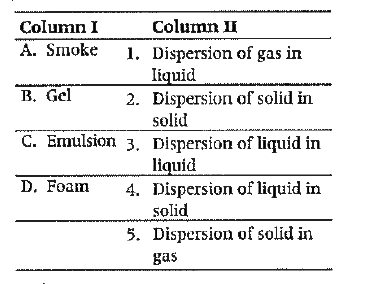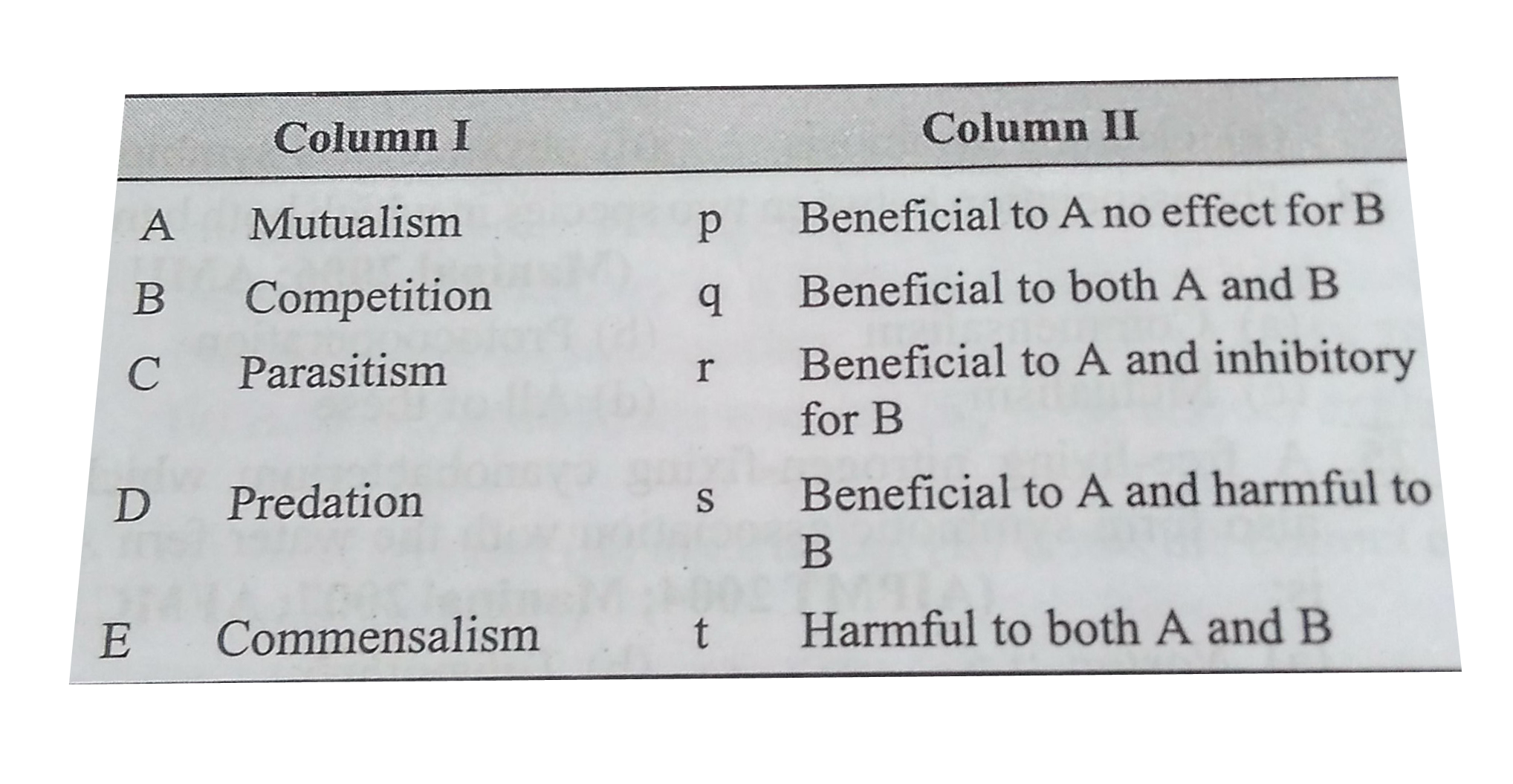Refer to the given table that summarises the interactions between two organisms (organisms 1 and organism 2). Identify the types of interaction (A,B and C) and select the correct answer.

(i) A can be either predation or parasitism.
(ii) B can be either commensalism or amensalism.
(iii) C can beamensalism.
(iv) A can be amensalism.
(i) and (ii)
(ii) and (iii)
(iii) and (iv)
(i) and (iii)
The correct Answer is:D
A can be either predation or parasitism since one species is harmed and the other is benefitted. B is commensalism since one species is benefitted and other has no effect no it. C ca be amensalism since one species is harmed and the other has no effect on it.
Topper's Solved these Questions
Similar Questions
The organism A, B and C can obtain their food in three different ways. Organsim A derives its food from the body of another living organism which is called its, D without killing it. The organism B takes in the solid food by the process of ingestion, digests a part of this food and throws out undigested food in the process called E. The organism C obtains its food from dead and decaying plants.
(a) What is the mode of nutrition of (i) organism A (ii) organism B, and (iii) organism C ?
(b) What is the organism like D called ?
(c) Name the process E.
(d) Give one example each of organisms like (i) A (ii) B, and (iii) C.
(e) What is the general name of three modes of nutrition exhibited by organisms A, B and C ?
View SolutionRefer to the periodic table given in your book and now answer the following questions:
a. Select the possible non metals that can show disproportionation reaction.
b. Select three metals that can show disproportionation reaction.
View Solution
Knowledge Check
Match the Column I with Column II and select the correct answer using the codes given below columns.

A, B and C in the given table areAA-4, B-2, C-3, D-1BA-2, B-4, C-1, D-5CA-5, B-4, C-3, D-1DA-5, B-2, C-1, D-3Refer to the given table. If '+' sign has been assigned for beneficial interaction, '-' sign for detrimental interaction and '0' for neutral interaction, identify the type of interaction (i),(ii) and (iii) and select the correct option.
SpeciesSpecies BType of interaction−−(i)+−(ii)+0(iii)A(i)(ii)(iii).PredationParasitismAmensalismB(i)(ii)(iii).CompetitionPredationCommensalismC(i)(ii)(iii).CompetitionParasitismCommensalismDBoth (b) and (c)The interaction between two living organisms of different species which is beneficial to both but is not obligatory because they can live without each other is known as
AProto-cooperationBMutualism or symbiosisCCommensalismDAmensalism
Parasite can be explained as an organism which depends on others :
(a) for food (b) for shelter (c) for both food and shelter , and (d) for reproduction .
View SolutionWhich among the following organisms can reproduce by the method of fragmentation?
(A) Algae
(B) Fungi
( C) Sporangium
View SolutionDifferent types of interactions and the nature of ineractions between species (A) and (B) are given in column I and II respectively. Choose the correct answer from the answer key where they are matched:

View SolutionWhich of the following ways can be used to prevent the rusting of iron?
I. Galvanisation
II. Alloying
III. Reaction with acid
IV. By applying paint
Select the correct answer using the codes given below
View SolutionWhich statement is/are correct?
(a) Ecology is a subject which studies the interaction among organism and between the organisms with its physical (abiotic) environment.
(b) Ecology is a subject which studies the interaction between the organism with its physical (abiotic) environment only.
(c ) Ecology is a subject which studies the interaction between the organism with its biotic environmentionly
(d) Ecology is a subject which studies the interaction between organisms and its biotic and physical (abiotic) environment
View Solution